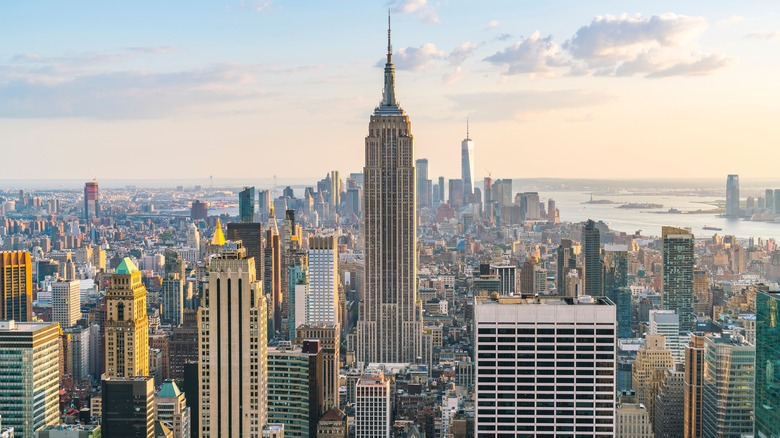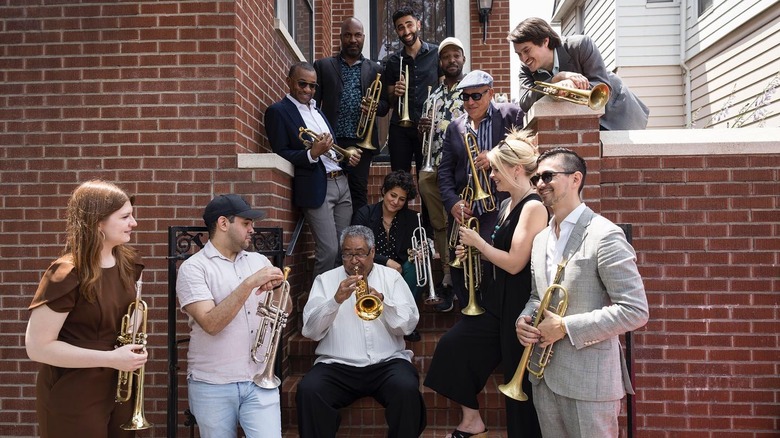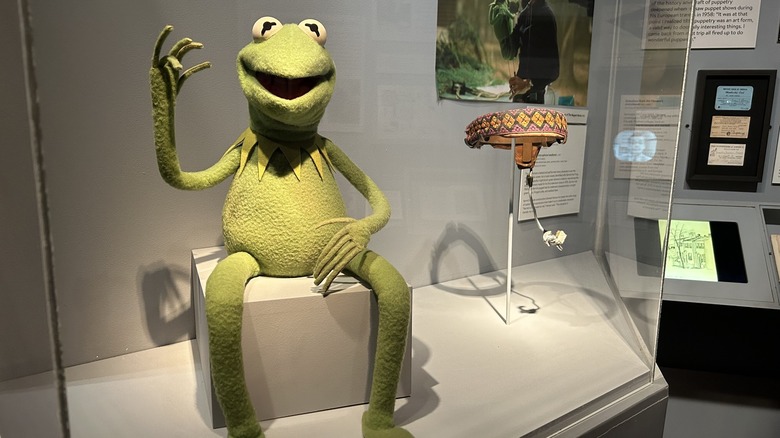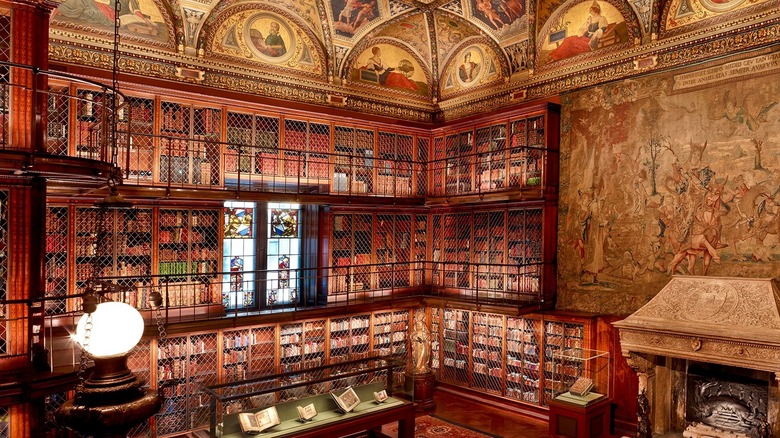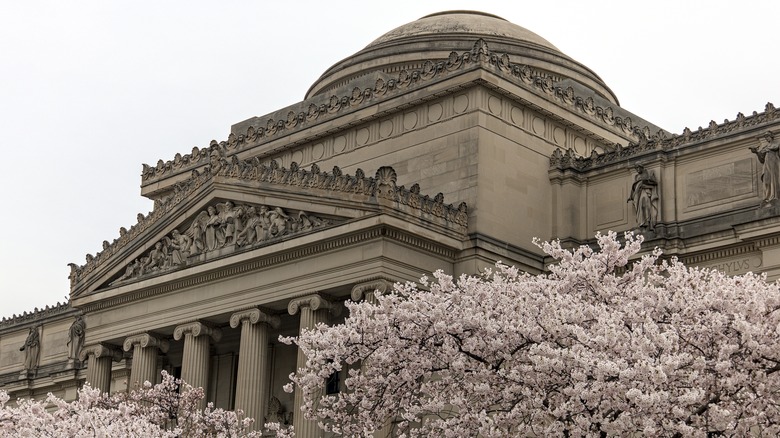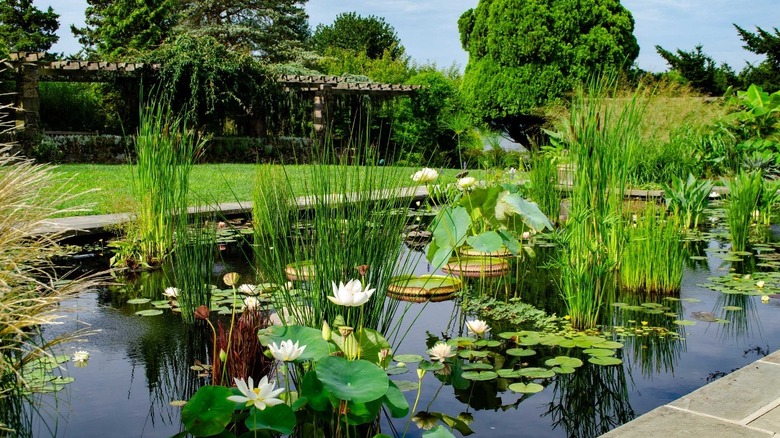Avoid Crowds Of The MoMA And Met For These Underrated But Just As Memorable NYC Museums
New York City may not count the highest number of museums of any city in the world, but it arguably boasts the most famous. The Met, MoMA, Guggenheim, Whitney, and Museum of Natural History are names recognized by nearly everyone, if only for their appearances in movies and television, be it "Night at the Museum" or "When Harry Met Sally." Unfortunately, the glare of the spotlight on these high rollers has blinded many visitors to the plethora of other great museums in the city, especially outside Manhattan. The turbo-boosts sparked by influencers has ballooned the crowds at the big names even further, forcing art lovers to fight for even a twinkle of van Gogh's "The Starry Night."
The good news is they don't have to. That's because these high-profile museums represent only a sliver of the more than 170 in New York City. At most of the others, visitors can find a far more intimate relationship, free of jostling and jockeying, with the exhibits and displays. Many also introduce people to new neighborhoods they might not otherwise visit, especially those in the outer boroughs. That's key to crafting a memorable experience, and science backs it up. As Dr. Laurie Santos, Yale professor, told GQ magazine, "Novel things capture our attention ... you're more likely to notice things and be present." Here are five under-the-radar museums that are easy to reach with this visitor's guide to New York City's chaotic subway system.
Louis Armstrong House Museum – Corona, Queens
Now that Broadway is singing Louis Armstrong again in "A Wonderful World: The Louis Armstrong Musical," it's an excellent time to pay further tribute to Satchmo at his home in the blue-collar neighborhood of Corona, Queens. He lived there with his wife, Lucille, from 1943 until his death in 1971, after which she stayed until her own in 1983. That they chose this location for their home is remarkable enough, considering Armstrong's international fame and success. It speaks to the connection he felt with everyday people — and they to him. "What the hell I care about living in a 'fashionable' neighborhood?" he said to Ebony magazine. It is believed that this neighborhood is what Armstrong was singing about in "What a Wonderful World."
Bequeathed to the Louis Armstrong Educational Foundation at Lucille's death, the Louis Armstrong House Museum now welcomes the public. While it hosts various exhibits and mementos of the iconic trumpeter, it's the house itself, which is largely preserved and restored to its condition during his lifetime, that remains the star attraction. Indeed, it seems so lived-in that it wouldn't surprise anyone if Armstrong suddenly walked through the door, especially in his den, where his reel-to-reel tapes, scribbled notes, and ashtrays appear ready for him to come home. The highlight, however, may be his lavish bathroom, with its gold-plated swan fixtures, marble tub, and floor-to-ceiling mirrors that show to his dedication to the laxative, Swiss Kriss.
Museum of the Moving Image – Astoria, Queens
Kaufman Astoria Studios in Astoria, Queens — one of New York's premier foodie neighborhoods — appears in a seemingly infinite numbers of shows and films, from "Orange is the New Black" to "Goodfellas" to "Serpico." So, it makes perfect sense that the neighborhood is also home to the Museum of the Moving Image, which is directly across the street from the studios. Inside its sleek, white interior is a collection of 130,000 movie artifacts, including historical cameras, film and TV stills, photography, and famous props and costumes. There is the mechanical doll from "The Exorcist" and Freddy Krueger's sweater and glove from "A Nightmare on Elm Street," among many others. The museum also walks the talk, with an on-site cinema hosting film series according to themes, types, and filmmakers. Sometimes the filmmakers themselves show up to give talks and introduce screenings.
The main attraction of the museum is muppeteer Jim Henson, whose life's work is on display in nearly 300 objects, including 47 puppets — Kermit the Frog, Miss Piggy, Big Bird, and the Swedish Chef. Visitors can even try their hands at puppeteering, too, by designing a puppet character and putting them on-screen. Other rotating exhibitions examine the works of other leading figures and technologies in the film world, like stop-motion animation, makeup and production design for "The Exorcist," and pieces by sculptor Auriea Harvey.
The Morgan Library & Museum – Midtown Manhattan
Wall Street titan John Pierpont Morgan may suffer a dubious reputation as the chief "robber baron" of his Gilded Age, but no one can debate the incredible impact he had on business and finance. Less appreciated is his patronage of the arts. Throughout his lifetime, he amassed an astounding collection of Renaissance art, Egyptian antiquities, Asian porcelains, Byzantine and early Christian objects, and so much more. Thousands of these objects and artworks eventually made their way to The Metropolitan Museum of Art, but a significant number — especially the rare books, manuscripts, drawings, and music — remained in the family. Today, they are on display at his personal office and library, now The Morgan Library and Museum.
Built as Italian Renaissance-style palazzo in the first years of the 20th century, the library is a work of art in itself, with intricate woodwork, stained glass, and a ceiling painted in gold of allegorical figures. Several of the bookcases even contain secret staircases that swing open with the pull of a handle. Morgan's personal study is another beauty. Bathed in rich red damask, it serves as a mini art gallery in itself, with paintings, sculpture, and objets d'art from the 14th to 17th century. Additional spaces and galleries built or incorporated in the years since put more of the collection on display – including works by Renoir, Picasso, Degas, and Rembrandt — and host regular exhibitions. In the 5,000-square-foot Morgan Garden outside are white geraniums, bluestone walkways, and pebble mosaics.
Brooklyn Museum – Prospect Heights, Brooklyn
Brooklyn's crown jewel, Prospect Park, is a beautifully wooded place to escape the hustle of New York City. Sitting like a cherry on top at its northern tip is Brooklyn Museum, a Neo-classical beauty housing 140,000 objects from more than 6,000 years of history. The masterpieces start outside in the pediment above the front door and the flanking statues "Brooklyn" and "Manhattan" by Daniel Chester French — best known for the Lincoln Memorial in Washington D.C. Step inside and the masterworks continue across 560,000 square feet of space and five floors, making it New York City's second largest museum. The permanent collection pulls from the entire world, too, be it a portrait of George Washington by Gilbert Stuart, a Lele mask from the Kuba Kingdom in Africa, or an 1,800-year-old limestone Buddha torso from India.
The Brooklyn Museum has also made a point of highlighting diverse groups since its founding and was among the first museums to showcase African art. It continues to do this with ongoing exhibitions like "Elizabeth Catlett: A Black Revolutionary Artist and All That It Implies" and "Nico Williams: Aaniin, I See Your Light." This also highlighting on the borough's contemporary artists, such as in "The Brooklyn Artists Exhibition," with the work of 200 artists on display. The museum's central place in the Brooklyn art scene also brings a robust events calendar, including book fairs, workshops, pop-up markets, dance parties, and yoga sessions.
Wave Hill – Riverdale, Bronx
The Bronx has long struggled with an image problem that has kept many tourists away. Perhaps the borough's best curative for this perception can be found at Wave Hill, a 19th-century estate on 28 acres of gardens and woodlands on the Hudson River. In 1965, it was reborn as a public garden, with a focus on the natural world, which it still pursues. This gallery of nature offers a dazzling tapestry of perennials, annuals, and shrubs that can stand against any masterpieces in the museums. Terraced gardens add culinary and medicinal herbs, like rose-scented geraniums and bay laurel. All culminate in the famous, festooned pergola overlooking the Hudson River — a scene regularly augmented with declarations of "I do."
Nature's art is joined by that of humans at the Wave Hill House and Glyndor Gallery, where regular exhibitions draw inspiration from the gardens. These include the ballpoint pen and crayon illustrations of "Emilie L. Gossiaux: Nature from Bed," expressionist sculptural works in "Judy Pfaff: Real and Imaginary," and photography of people amid real and synthetic nature in "Ruben Natal-San Miguel: Nature Finds a Way." Special events like Day of the Dead — teaching Mexican folk-art techniques and customs — makes it interactive, as do regular live music and dance performances on the great lawn. The landscape merges with the culinary in afternoon tea on the Kate French Terrace or inside the historic home's tea room.
